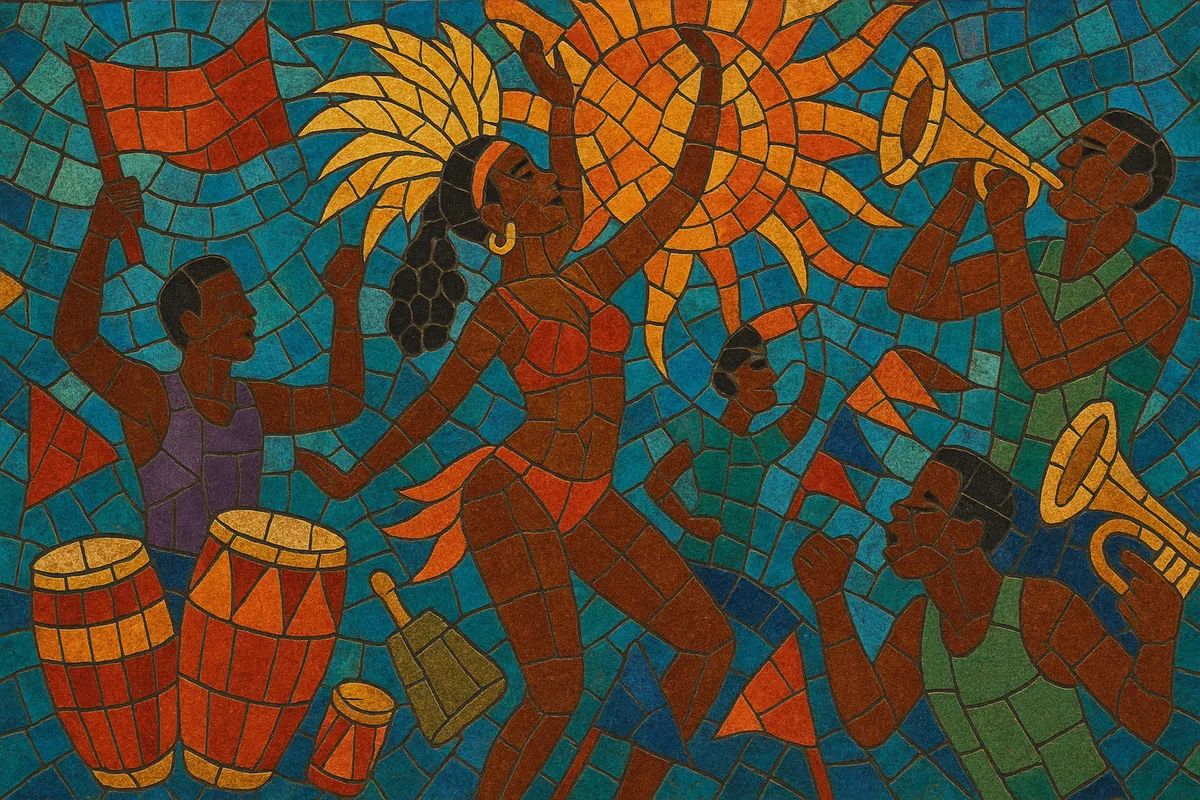Power soca is the high‑tempo, stadium‑sized branch of soca built for Carnival stages, road marches, and fetes. It prioritizes relentless forward motion, crowd commands, and explosive choruses designed for mass participation.
Typically clocking in around 150–165 BPM, power soca pairs four‑on‑the‑floor kicks with dense Caribbean percussion (iron/cowbell, congas, shakers) and punchy horn or synth riffs. Vocals are often call‑and‑response chants that cue physical action—jump, wave, wine—creating a feedback loop of energy between performer and crowd.
While the sound draws from traditional calypso/soca rhythms, modern production folds in festival‑style EDM power, contemporary drum programming, and arranged breakdowns that fuel flag‑waving, wining, and big chorus reprises.
Soca, itself a modernized offshoot of calypso, had a long tradition of uptempo road tunes crafted for Trinidad and Tobago’s Carnival. By the late 1980s and especially the 1990s, artists increasingly pushed tempo and intensity for dancing on the road, crafting fast, chant‑heavy anthems that foreshadowed what would later be called power soca.
The term "power soca" gained currency in the 2000s as the scene informally distinguished two complementary directions: the fast, explosive Carnival anthems (power) and the mid‑tempo, groove‑focused tracks (often called groovy soca). Competitions and festival programming reinforced the distinction, and production aesthetics crystalized around very high BPMs, big hooks, and crowd‑control breakdowns.
As Trinidad and Tobago’s Carnival anthems travelled across the Caribbean and diaspora, power soca became a staple in Barbados, St. Vincent and the Grenadines, Grenada, and beyond. Modern power soca incorporates festival‑style EDM impact, tightly arranged horn/synth stabs, and engineered "jump and wave" sections, while keeping hallmark elements from calypso and the Carnival engine room at its core.


